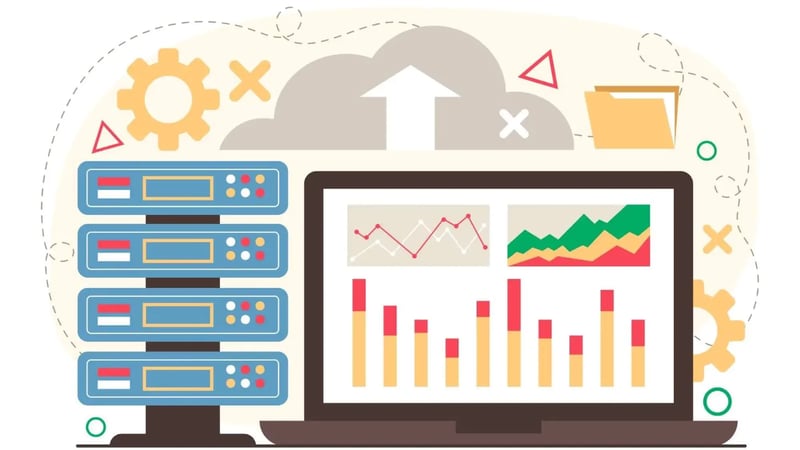Il futuro della data privacy: bilanciare personalizzazione e consenso
Nell'era digitale, la privacy dei dati è emersa come una delle principali preoccupazioni. Nel periodo precedente a Internet, tali preoccupazioni erano scarse, poiché era difficile raccogliere grandi quantità di informazioni da numerosi individui contemporaneamente.
Tuttavia, l'avvento di Internet ha inaugurato un'era di raccolta di dati estesi. Le persone hanno permesso ai siti web di memorizzare i cookie sui loro dispositivi e hanno ceduto i loro diritti sui dati alle piattaforme online. Questo ha permesso alle aziende di accumulare una grande quantità di dati per scopi di marketing personalizzato. Tuttavia, questa pratica violava anche la privacy, poiché molti consumatori non erano consapevoli che le loro informazioni venivano raccolte e utilizzate.
Nel panorama odierno, per risolvere questi problemi sono state introdotte normative come il CCPA (Stati Uniti) e il GDPR (Europa). Approfondiamo perché la privacy è fondamentale e perché le aziende devono rispettarla.
Perché la privacy è importante?
La raccolta dei dati degli utenti è diventata rapidamente un problema quando gli hacker hanno trovato il modo di rubarli e causare danni di ogni tipo. Oltre ai danni finanziari, i danni sociali dovuti al furto di identità e ad altri crimini di questo tipo sono stati estremamente elevati.
Un buon esempio è rappresentato da Yahoo. Questa azienda è stata vittima di due violazioni di dati: una nel 2013 e l'altra nel 2014. Gli attacchi hanno portato alla perdita dei dati completi degli account di tutti i 3 miliardi di utenti di Yahoo. Yahoo non è l'unica, perché molte altre aziende hanno avuto scandali enormi nel corso degli anni.
Sony è un altro esempio noto per essere stato violato. Ecco un articolo di LinkedIn che cataloga tutti i casi di violazione dei dati di Sony. Secondo l'articolo, tra il 2011 e il 2023 Sony ha subito sei violazioni di dati in cui sono stati rubati i dati dei dipendenti e dei clienti, comprese informazioni sensibili come password e dati delle carte di credito.
Questi sono tutti problemi di sicurezza, ma evidenziano un problema fondamentale: i dati e le informazioni sono preziosi e i malintenzionati cercheranno di accedervi.
È qui che si pone il problema della privacy. Se le aziende non raccogliessero così tanti dati, verrebbero prese di mira per questi attacchi? Verrebbero danneggiate così tante persone che, consapevolmente o meno, hanno affidato i loro dati all'azienda?
Ecco perché si pone tanta enfasi sulla privacy e sulla protezione dei dati degli utenti. Vediamo ora come le aziende possono andare avanti rispettando gli standard di privacy.
Come le aziende possono bilanciare personalizzazione e privacy
Di seguito sono elencate alcune cose che tutte le aziende dovrebbero e devono fare per bilanciare personalizzazione e privacy.
1. Essere trasparenti sulla propria politica di raccolta dei dati
La trasparenza è necessaria per ottenere la fiducia dei consumatori e costruire la credibilità del marchio. Dovete essere molto chiari sul tipo di dati che raccoglierete e per cosa li userete. Il processo di informazione deve essere semplice e diretto.
Poiché è un obbligo di legge divulgare queste informazioni, le aziende utilizzano modelli oscuri per rendere le informazioni più difficili da vedere. Il loro incentivo è quello di mantenere il consumatore all'oscuro dei dati, perché un cliente ignaro non è in grado di presentare un reclamo.
Un esempio comune è quello di nascondere i dettagli sulle informazioni raccolte dai cookie. Per vedere effettivamente le informazioni, bisogna attraversare una serie di pagine prima di raggiungere i dettagli effettivi.
Questo genera sfiducia ed è un ottimo modo per assicurarsi che le persone tecnologicamente preparate non visitino il vostro sito o utilizzino i vostri servizi.
Se siete trasparenti e non nascondete nulla, potete essere certi che le persone che rimangono si fidino della vostra azienda. Si raccomanda di essere particolarmente trasparenti nella raccolta di informazioni di identificazione personale come indirizzi IP, posizione/geolocalizzazione IP e nome utente/email.
2. Ottenere il consenso esplicito alla raccolta e all'utilizzo dei dati
A causa del GDPR, in Europa è illegale ottenere e utilizzare i dati dei consumatori senza il loro esplicito consenso. Negli Stati Uniti la situazione è più eterogenea. Ci sono diverse leggi specifiche che hanno un campo di applicazione limitato. Il CCPA, ad esempio, è solo una legge statale. Si applica solo nello Stato della California.
Negli Stati Uniti esistono anche numerose altre leggi, come FERPA, GLBA, FCRA, HIPAA e così via. Alcune di queste leggi limitano la condivisione di specifici tipi di dati con determinati enti, ad esempio i rapporti sanitari e i rapporti di credito. Altre impongono di fornire agli utenti l'opzione di rinunciare alla raccolta dei dati.
Pertanto, come azienda, dovete essere consapevoli delle leggi vigenti nella vostra regione e rispettarle. Come regola generale, dovreste sempre fornire l'opzione di opt-out e renderla semplice e diretta. I vostri clienti non devono fare i salti mortali per trovare la pagina di opt-out.
In questo modo, più persone vi apprezzeranno e voi non vi troverete in futuro dalla parte sbagliata della legge. Perché, che vi piaccia o no, la privacy è diventata una preoccupazione enorme e prima o poi tutto il mondo dovrà seguire le pratiche di protezione dei dati dei consumatori.
3. Mettere la privacy al primo posto in tutte le strategie di marketing
Incorporate il pensiero privacy-first nella vostra strategia di marketing per stare al passo con l'onda della privacy. Negli Stati Uniti molti Stati stanno lavorando per approvare leggi sulla protezione dei dati dei consumatori.
Nell'UE le normative sono già in vigore. Dovete quindi pensare a come incorporare la privacy degli utenti nelle vostre pratiche commerciali. Una delle cose più importanti da fare in questo caso è che l'utente "opti" per il consenso piuttosto che per l'"opt-out".
Oggi le aziende utilizzano i loro prodotti e servizi per raccogliere i dati dei consumatori in modo predefinito. Il consumatore permette inconsapevolmente alle aziende di farlo accettando il contratto di licenza con l'utente finale. Tutti i consumatori devono fare i salti mortali per rinunciare alla raccolta e all'utilizzo dei dati.
Questa situazione deve finire e potete iniziare a farlo oggi stesso. La raccolta dei dati dovrebbe essere disattivata per impostazione predefinita. I consumatori dovrebbero avere la possibilità di scegliere di partecipare alla raccolta dei dati in modo da ottenere risultati personalizzati.
Questo approccio di base orientato alla privacy può aiutarvi a rispettare la legge sulla privacy dei consumatori. Siate chiari con tutti i vostri clienti: se vogliono la personalizzazione, devono scegliere di partecipare alla raccolta e all'elaborazione dei dati.
4. Impiegare la minimizzazione e la cancellazione dei dati
Un altro metodo per bilanciare personalizzazione e privacy è la minimizzazione dei dati. Si tratta della pratica di raccogliere solo i dati più necessari e di rinunciare a tutto il resto.
Al giorno d'oggi, le aziende avide raccolgono tutti i tipi di dati, compresi quelli di cui non hanno bisogno. Questo è un male perché mette a rischio la privacy del consumatore. Se l'azienda subisce una violazione dei dati, tutte quelle informazioni in più diventerebbero un rischio ancora maggiore. Per evitare che ciò accada, le aziende devono ricorrere alla minimizzazione dei dati.
Un'altra tecnica da utilizzare insieme a questa è la cancellazione dei dati. La cancellazione dei dati è l'eliminazione di tutti i dati non più necessari. Per qualsiasi motivo, le aziende sono riluttanti a cancellare i dati. Preferiscono conservarli per sempre invece di cancellarli.
Questo è un altro rischio per la privacy dei consumatori, perché gli hacker amano rubare queste informazioni redditizie. Per proteggere la privacy dei consumatori, tutti i dati non più utili dovrebbero essere eliminati.
5. Utilizzare strumenti e tecnologie per migliorare la privacy
Poiché i dati vengono raccolti attraverso la tecnologia, anche la loro privacy può essere garantita attraverso la tecnologia. Le aziende possono adottare diversi approcci per migliorare la privacy dei propri clienti.
Un metodo semplice consiste nell'introdurre rumore nel set di dati. I dati diventano difficili da usare con il rumore. Inoltre, è molto difficile identificare personalmente una persona dai suoi dati. Se non capite cosa significa rumore, sappiate che si tratta di dati inutili che inquinano l'insieme dei dati e rendono difficile discernere qualcosa di significativo da essi.
È facile filtrare il rumore per chi lo ha introdotto, ma per chiunque altro sarà difficile capire il significato dei dati.
Un'altra tecnologia che le aziende possono utilizzare per migliorare la privacy degli utenti è l'apprendimento automatico federato. Le aziende raccolgono i dati, li elaborano con il machine learning e creano le personas del pubblico. Queste personas aiutano la segmentazione del marketing e portano i tanto agognati profitti.
Nell'apprendimento federato, i modelli possono analizzare i dati in posizioni separate senza condividerli. Ciò significa che i dati non devono essere archiviati su un server centrale. Al contrario, i dati dell'utente possono rimanere sul suo dispositivo e l'apprendimento federato può accedervi per la creazione e l'elaborazione dei modelli.
Naturalmente, questo approccio richiede che il livello di autorizzazione e di accesso del modello al dispositivo sia altamente selettivo e controllato; in caso contrario, si aprirebbe un nuovo problema.
Questo migliora la privacy perché l'utente ha il controllo dei propri dati e può scegliere cosa elaborare e cosa ignorare. Queste pratiche dovrebbero diventare sempre più diffuse.
Conclusione
La privacy dei dati dei consumatori è fondamentale. Non dovrebbe essere ignorata da nessuno. Fortunatamente, le masse si stanno avvicinando all'idea di proteggere la propria privacy. Le aziende devono utilizzare i metodi che abbiamo elencato sopra (e altri ancora) per trovare un equilibrio tra privacy dei consumatori e personalizzazione.
Ecco, quindi, che il futuro della privacy dei dati è luminoso. Le leggi vengono approvate per salvaguardare e sostenere i diritti dei consumatori in merito ai loro dati. Prima le aziende si metteranno in riga, meglio sarà per loro in futuro.
Questo contenuto è disponibile in:
- Tedesco: Die Zukunft des Datenschutzes: Personalisierung und Nutzerzustimmung
- Inglese: The Future of Data Privacy: Balance Personalization with User Consent
- Spagnolo: Protección de datos: equilibrio entre personalización y consentimiento
- Francese: Confidentialité: Équilibrer la personnalisation et le consentement
- Rumeno: Confidențialitatea Datelor: Personalizare și Consimțământ
- Cinese: 数据隐私的未来:平衡个性化与用户同意










Facci sapere cosa ne pensi.